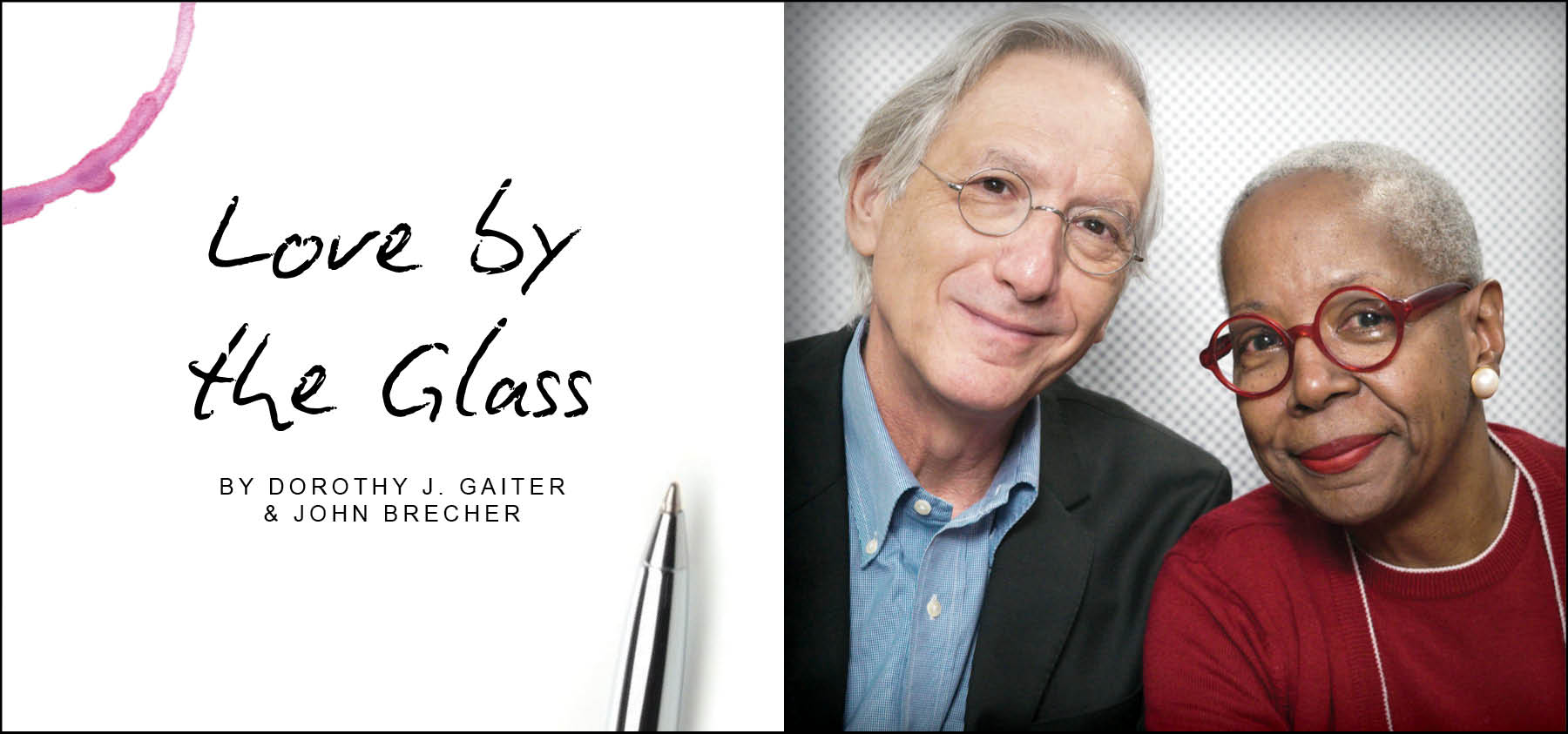
Our worst BYOB experience occurred in 1995. We’d visited a nice restaurant on Manhattan’s Upper East Side a couple of times and had a lovely experience. We enjoyed talking with the owner about wine and he had a pretty good list. We told him we had some treasures at home and asked if we could bring our own and pay corkage. Sure, he said.
A short time later, we showed up with a gem from a famed winery: 1983 Dunn Howell Mountain Cabernet Sauvignon. We sat down and proudly showed it to him.
Well, the first cork that popped that night was his. “Have you looked at our wine list?” he demanded in a too-loud voice. We explained that, yes, we had and it was very good, but that this was a special bottle and he had said we could bring it.
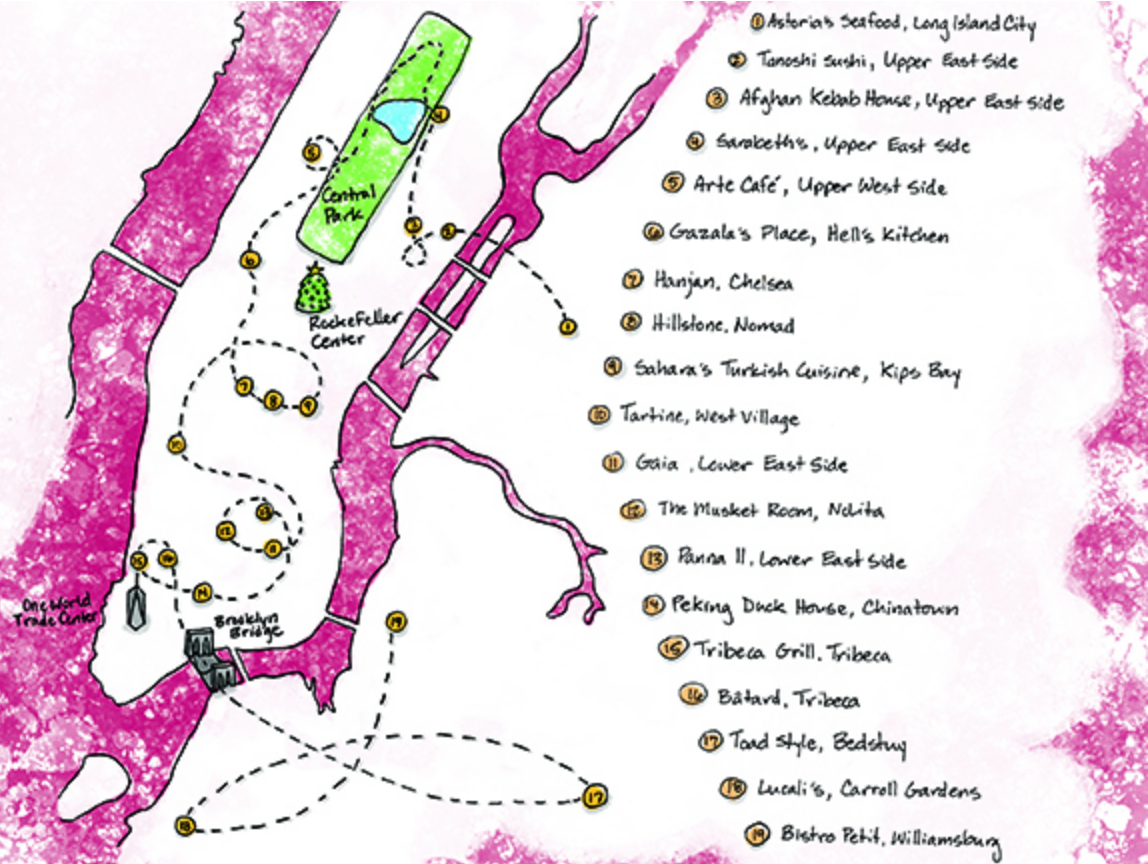
(Believe in the Magic of BYOB illustration by Cat Baldwin)
Before we knew what was happening, he grabbed the bottle – to open it, we figured. But then, much to our alarm, he walked away with it. When he returned, the bottle was empty. He thrust it and a full carafe of red wine at us. We hope he and the kitchen staff enjoyed that Dunn, because we’re sure we never got to taste it. We decided not to make a scene, a choice we now regret. But we never went back, and the place closed soon afterward. Good!
Bring Your Own Bottle does inspire passion in people, pro and con. We once asked one of our favorite restaurateurs why he didn’t allow it and he said, “What’s next? Letting people bring their own steaks?”
There are laws against BYOB in some places. In others, the law, by accident or design, encourages it. We understand that New Jersey is a BYOB heaven, for instance.
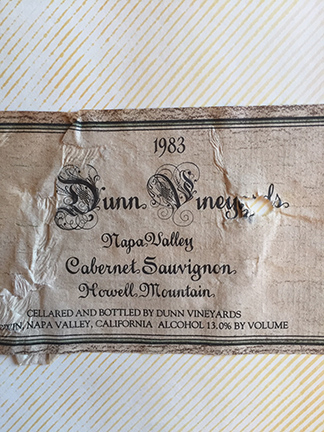
While BYOB is legal in New York, we’ve found it difficult to discover a nice, relaxing place that really welcomes it, regardless of the corkage. But we are here with good news: At least where we live, the tide might be turning.
There are many lists online of restaurants that permit BYOB (though it’s important to call to confirm; some lists are unreliable and there are often rules, like you can’t bring a bottle that’s on the wine list).
Even some well-known, fancy restaurants now encourage BYOB, including Aureole, in the Times Square area. The head sommelier there, Tyler Newell, told us: “We offer a free corkage policy to all our guests after 8 p.m., so anyone can come in and order à la carte, 3-course, or tasting menu and feature a bottle special to them. Whether that is sentimental, intriguing, rare, or plain interesting to the guest, no fee after 8 p.m.”
The reservation booker at Bar Primi on Bowery in Manhattan told us its corkage fee is $35 and the limit is two regular-size bottles.
Our own research started near our apartment, at Trattoria iL Gusto Wine Bar. It’s an old-school, little Italian place that underwent a serious overhaul a few years ago, with new management and menu and a more open feel to it. It’s pleasant. Although it has “Wine Bar” in the name, its list is short, somewhat pricey and rarely changes. And many of the wines are kept standing along the walls, which may look attractive but isn’t doing them any good. So when we went recently, we asked if we could bring our own. Yes, the waiter said, but the corkage is $35.
Did he mean it?
A couple of weeks later, we showed up with something special: Vigneti Massa “Monleale” 2005, a Barbera from the Piedmont region of Italy. We found this at Crush Wine & Spirits in New York in 2013. We didn’t know anything about it, but we trust that store and a well-aged Italian red for $29.99 seemed like a good bet.
Barbera, of course, is the often simple, everyday red of Piedmont. But not this one. This wine, from the DOC Colli Tortonesi, was made by Walter Massa, whose family has farmed vineyards there for generations. It is intense and made to age. We were so impressed with the first bottle that we went back and got more. And six years later, we took one to the Trattoria.
We sat down and showed the bottle to our young waiter. He pleasantly advised us of the corkage policy. Then he carefully cut around the foil on the top of the bottle, bent it back and placed the cork inside the loop of foil. We hadn’t seen that done since the ’70s. He said his first job was at a French restaurant and they taught him that. Charming.
The wine was excellent. Our notes: “Crisp, focused and still youthful. Absolutely vibrant with fruit. Some raspberries and lots of earth, especially on the finish. There isn’t a hint of age, even after it has been open for well over an hour. It’s just so linear -- all of the tastes are so very focused and seem carefully directed in a straight line, with no extraneous tastes and nothing added or subtracted from the ripe fruit, which actually tastes sunny, in an odd way. It is perfect with the Italian food,” particularly Dottie’s seafood in squid-ink pasta and John’s chicken Francese.
We offered our waiter a taste and he was wowed. He said it was the oldest wine he’d ever tasted – and, yes, we felt very old.
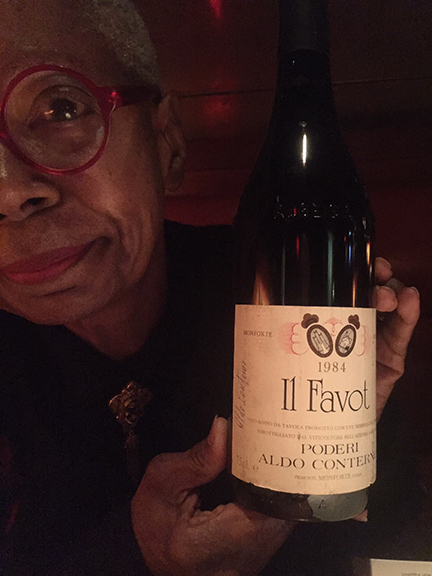
We even found that at Hillstone, which some people consider the temple of BYOB in New York for its combination of great food, a welcoming atmosphere and a sophisticated vibe. Hillstone is part of the Hillstone Group, which is more than 50 restaurants under a whole bunch of names, including Houston’s. Our first Hillstone experience was years ago at the Rutherford Grill in Napa Valley, where the kids loved the ribs and the cornbread served in a skillet. The two Hillstones in Manhattan are our go-to places for family occasions. We celebrated Media and José’s engagement there.
Its wine list is OK, but many of the wines are pricey and, generally, we don’t find them that interesting. (There are exceptions, of course. Schramsberg Blanc de Noirs for $59 is a good deal at a New York restaurant and we’re always delighted to see a fine Riesling like Hermann J. Weimer. Here’s the list of the midtown Hillstone.)
So when we heard a couple of years ago that Hillstone charged $15 corkage for a regular-size bottle, we were there in a heartbeat. Each time we went, we and our wines were treated with respect. So, for this column, we decided to return with something dear to us, actually Open That Bottle Night-worthy: 1984 Il Favot Nebbiolo from Aldo Conterno in Piedmont, signed by the legend himself. We visited the winery on our first trip to Italy and, unannounced, dropped in and asked if we could taste some wines. (This was long before we wrote about wine.) We will always remember Conterno, in a well-worn gray sweater, pouring his wines with such great pride. He spoke little English and we spoke no Italian, but it didn’t matter.
We could never stand to open this bottle. He died in 2012, making it even harder. But we noticed recently that the fill was getting low. It seemed like a perfect choice for Hillstone.
But what if it was truly over? Just in case, we also took along something unusual: Acumen Peak 2018 Sauvignon Blanc from Napa Valley, which the winery had sent to us. We’d never tasted an Acumen wine. The winery made just 112 cases of this, it’s only available from the winery and it costs $75. Seventy-five bucks for a Sauvignon Blanc? We were skeptical, but we assumed it would be sound, so it was a worthy backup.
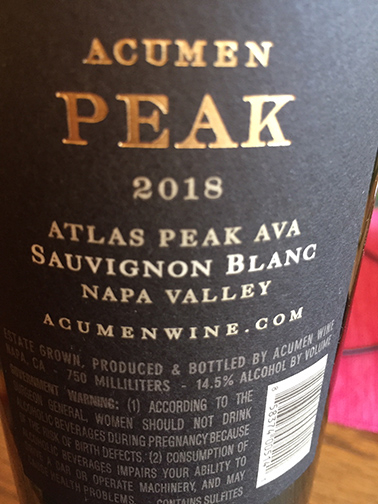
It was time for the Il Favot. Whenever we take an old, fragile wine to a restaurant, we bring along a prong cork remover and tell the server we’re prepared to open it, so it will be our fault if the cork falls apart. They are always loath to let us do that until the cork indeed begins to fall apart, and then they let John come to the rescue. Such was the case here.
The wine came out brownish, showing its age. It smelled of dust, too, but there was something else. We wrote: “Smells haunting and romantic, with red berries and chocolate. There’s some orange and a touch of tar. Great acidity, some fruit, plenty of earth. Like an old Burgundy.” As the wine opened, it tasted – and looked – darker, with more spice. It seemed to pull itself together for one last punch of fruit and then it quietly and slowly disappeared into a kind of Piedmont fog. It was well past its prime, but still beautiful with Dottie’s prime rib.
Hillstone is a notoriously press shy operation and declined to answer our questions about why it features BYOB. (Here’s a piece by Andrew Knowlton of Bon Appétit that’s posted on Hillstone’s site. It details his attempts to get the owner’s cooperation.
So we asked Tyler Newell at Aureole what he would tell his peers about BYOB. He wrote: “Other restaurants/business owners can look at this as ludicrous and simply a poor business decision. However, our location has a strong pre-theater crowd, being in Times Square, and by 7:30 the restaurant clears out as guests head to their shows. To support a stronger second seating, the ‘Collectors Welcome Deal’ fits our needs. It’s about filling a seat and selling some extra food.
“I encourage other restaurants to try fun/creative incentives but also create a symbiotic relationship with the ever-growing budget-savvy consumer,” Newell added.
If you live in an area where BYOB is legal, try to do it. The more of us who do, the more likely it is that restaurants will understand that it puts butts in seats. We’d urge you to take special wines; to offer your waiter or sommelier tastes; and to tip as if you’d ordered a bottle from the menu (though we understand that tipping on a bottle of wine is a matter of great debate in its own right).
One other thing: If you’ve had a particularly good or bad experience with BYOB, or have some thoughts about it, we’d love to hear from you. Please contact us through The Grape Collective’s Facebook page: https://www.facebook.com/grapecollective/
Dorothy J. Gaiter and John Brecher conceived and wrote The Wall Street Journal's wine column, "Tastings," from 1998 to 2010. Dorothy and John have been tasting and studying wine since 1973. Dottie has had a distinguished career in journalism as a reporter, editor, columnist and editorial writer at The Miami Herald and The New York Times as well as at The Journal. John was Page One Editor of The Journal, City Editor of The Miami Herald and a senior editor at Bloomberg News. They are well-known from their books and many television appearances, especially on Martha Stewart's show, and as the creators of the annual, international "Open That Bottle Night" celebration of wine and friendship. The first bottle they shared was André Cold Duck. They have two daughters.
Read more from Dorothy J. Gaiter and John Brecher on Grape Collective.
Banner by Piers Parlett
For more on BYOB check out Believe in the Magic of BYOB










